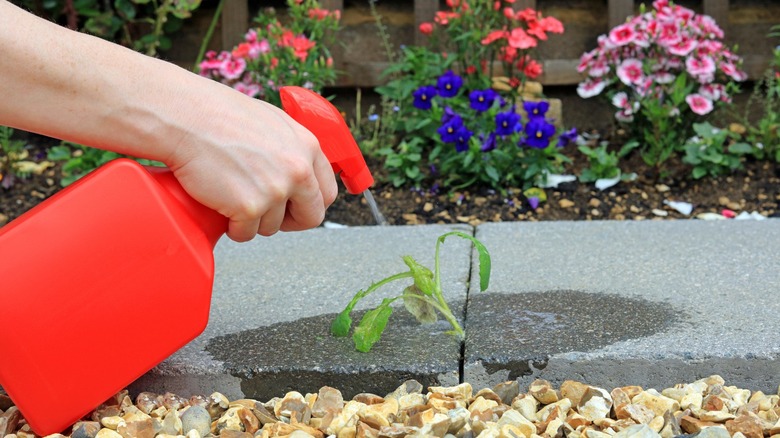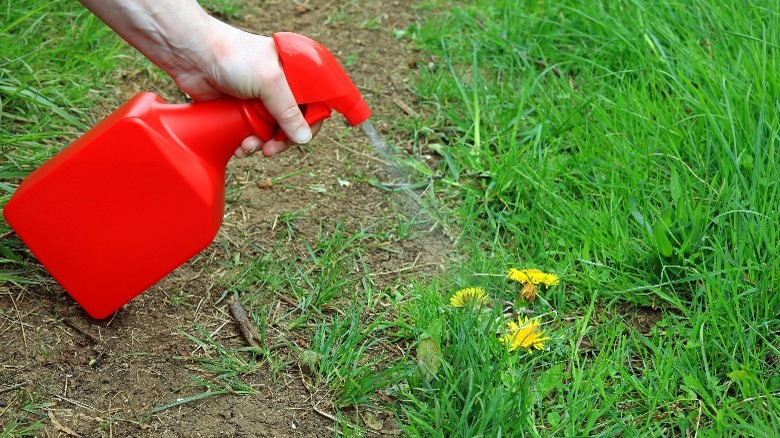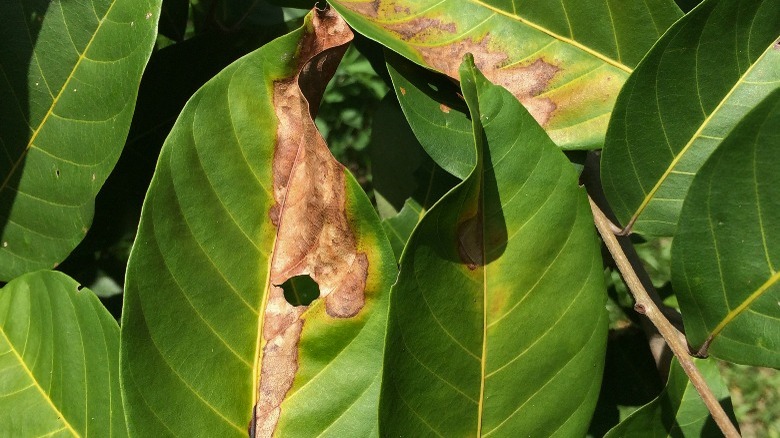Using Rubbing Alcohol To Destroy Weeds: Good Idea Or Harmful Mistake?
Weeds are a gardener's nemesis, often leading to a search for effective and safe weed control methods. While digging is the best way to get rid of weeds, this method requires hard work. Among various homemade solutions touted as an easier fix, using alcohol as a weed killer has gained popularity. Gardeners frequently turn to rubbing alcohol as a trusted method for eliminating these pesky intruders. Not only is it cost-effective, but this common household item is easily found in most homes and even in many handbags, making it a go-to choice for those seeking a handy weed control option.
But before you turn to this weed-removal method around your home, it's essential to ask: How effective is rubbing alcohol as a weed killer? And more importantly, is it a wise choice for your garden? It turns out that you may not want to stock up on rubbing alcohol for your garden just yet.
The challenge with most weed killers, including rubbing alcohol, is their non-selective nature. This means they don't just target weeds; they can also harm other vegetation, such as your beloved plants and lawn grass. It's worth evaluating where exactly you need to remove weeds and the potential negative effects alcohol could have on your local environment before you start dousing the unwanted plants in your yard.
How rubbing alcohol destroys weeds
Rubbing alcohol has gained popularity in the gardening community for a reason: It's effective. It works as a weed killer because it is a desiccant, drawing moisture from plants' foliage, which causes them to weaken and die. Additionally, rubbing alcohol serves as an emulsifier, breaking down the protective waxy outer layer of plants, which hastens their demise.
If you're keen on creating your homemade weed killer using rubbing alcohol, all you need to do is mix one quart of plain water with two tablespoons of rubbing alcohol. Pour the mixture into a spray bottle and spritz away; it's even more effective on sunny days, when the heat will help the weeds dry out even more quickly. However, the alcohol solution will have a similar effect on any other plants that it touches, so it's important to spray it only on the weeds. If weeds pop up around your houseplants, you can also pour the mixture on a cotton ball and directly rub it on the weeds to prevent it from getting to your plants.
Within 24 hours, you'll likely find curled, withered leaves or burned marks on the areas the alcohol touched. But if the weeds seem unaffected, don't overspray them — the alcohol solution could drip off the leaves and into the soil, which will set up your garden for a whole host of problems later.
Why using rubbing alcohol can be harmful
In addition to the risk of harming nearby plants, using rubbing alcohol as a weed killer can harm your garden's ecosystem. Introducing large amounts of alcohol into the soil can devastate its microbiome, killing the beneficial bacteria and microbes essential for soil health. This can lead to soil infertility, rendering it unfit for future plant growth of any kind.
Another problem with using rubbing alcohol to kill weeds in your lawn is that it's only a temporary fix: Weeds tend to regrow quickly if the roots aren't damaged. In addition, rubbing alcohol can be harmful to animals and humans when ingested — so using it around your vegetable garden or in areas where wildlife visitors like to nibble at the foliage isn't the best idea.
Essentially, while rubbing alcohol is effective for weed removal, you'll need to be wise about where you put it. Using rubbing alcohol to kill weeds sprouting on walking paths or in cracks in concrete doesn't sound so bad, but the same can't be said for using this trick in the garden. If you mistakenly spray rubbing alcohol on your plants, remove the affected stems or leaves and wash away the residual alcohol by rinsing the plant with clean water — and maybe consider another weed-removal method for that area in the future.


